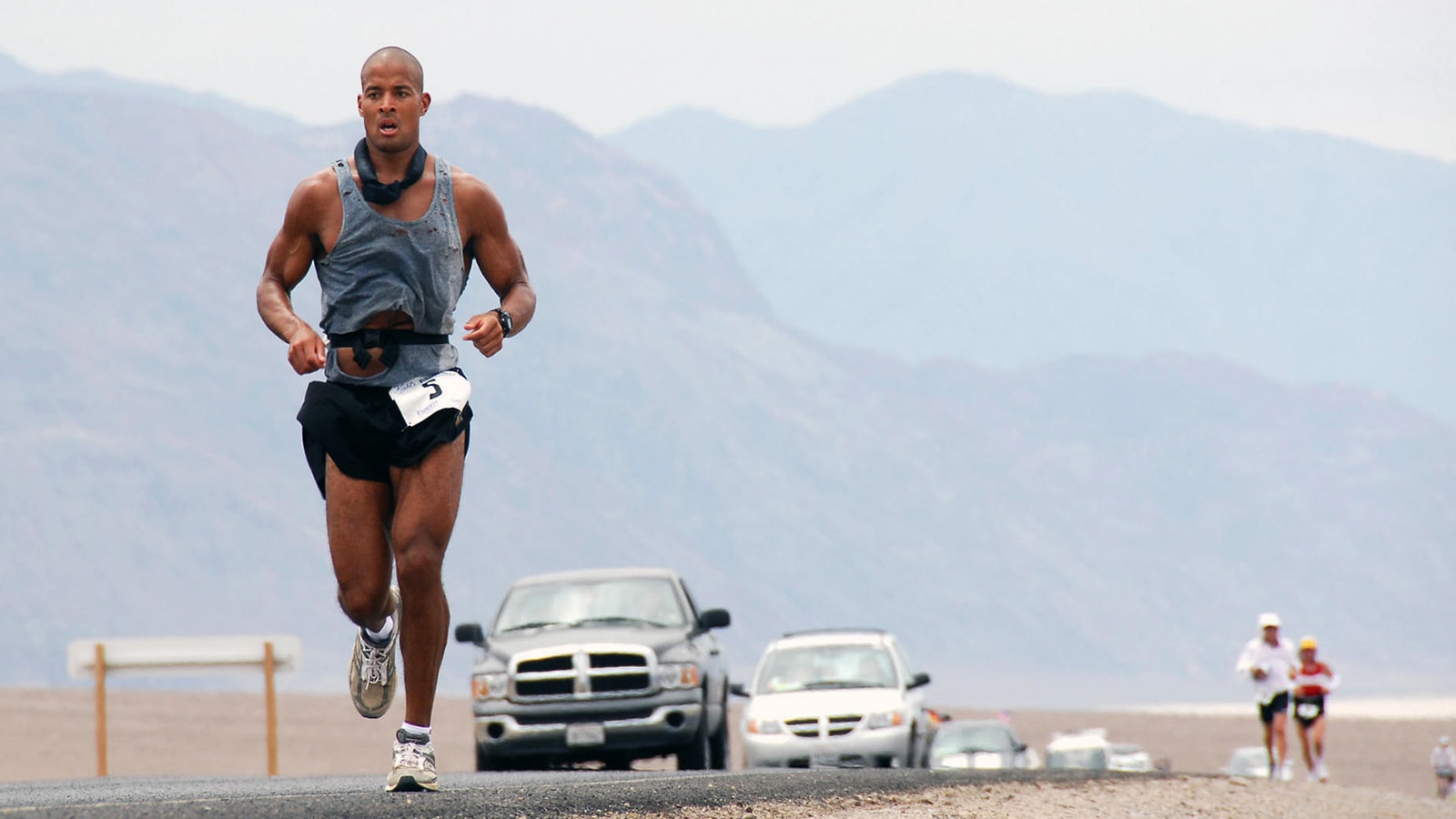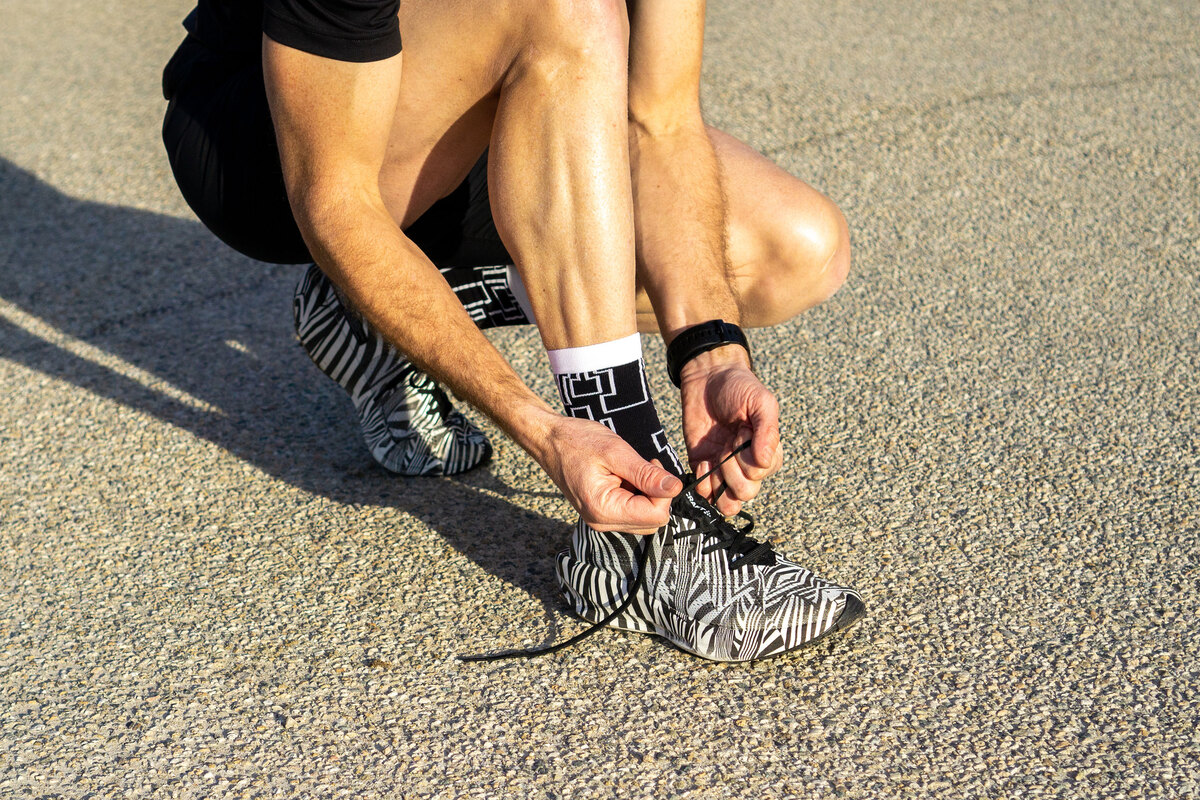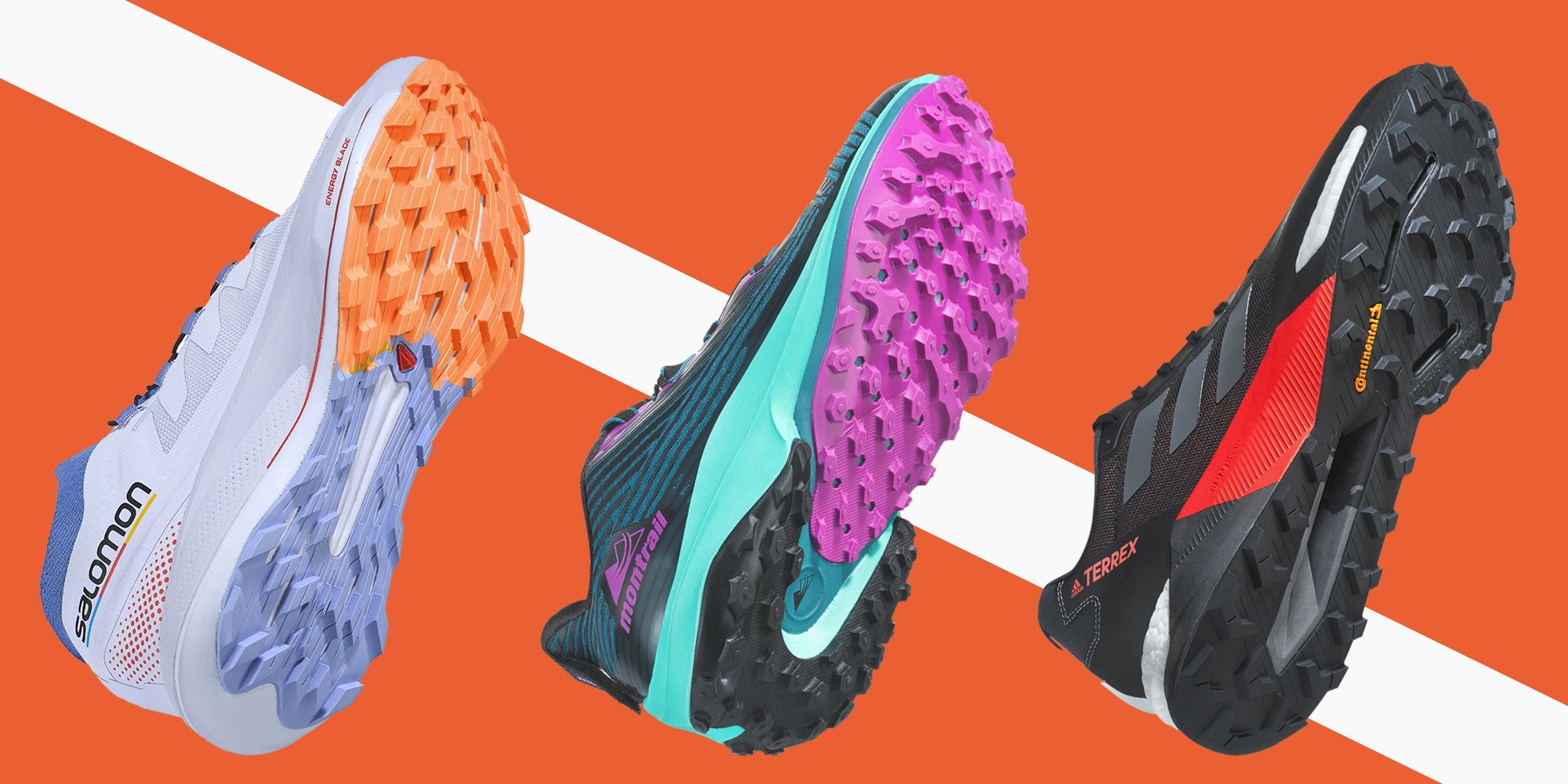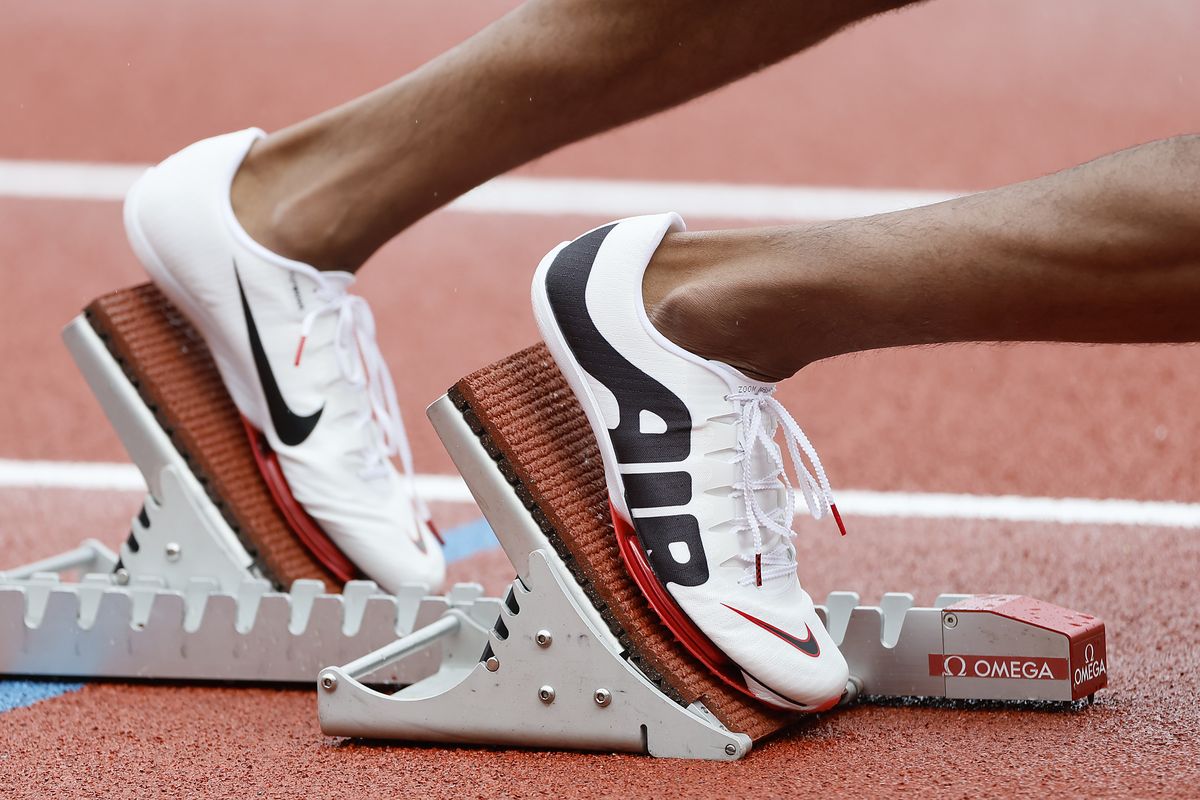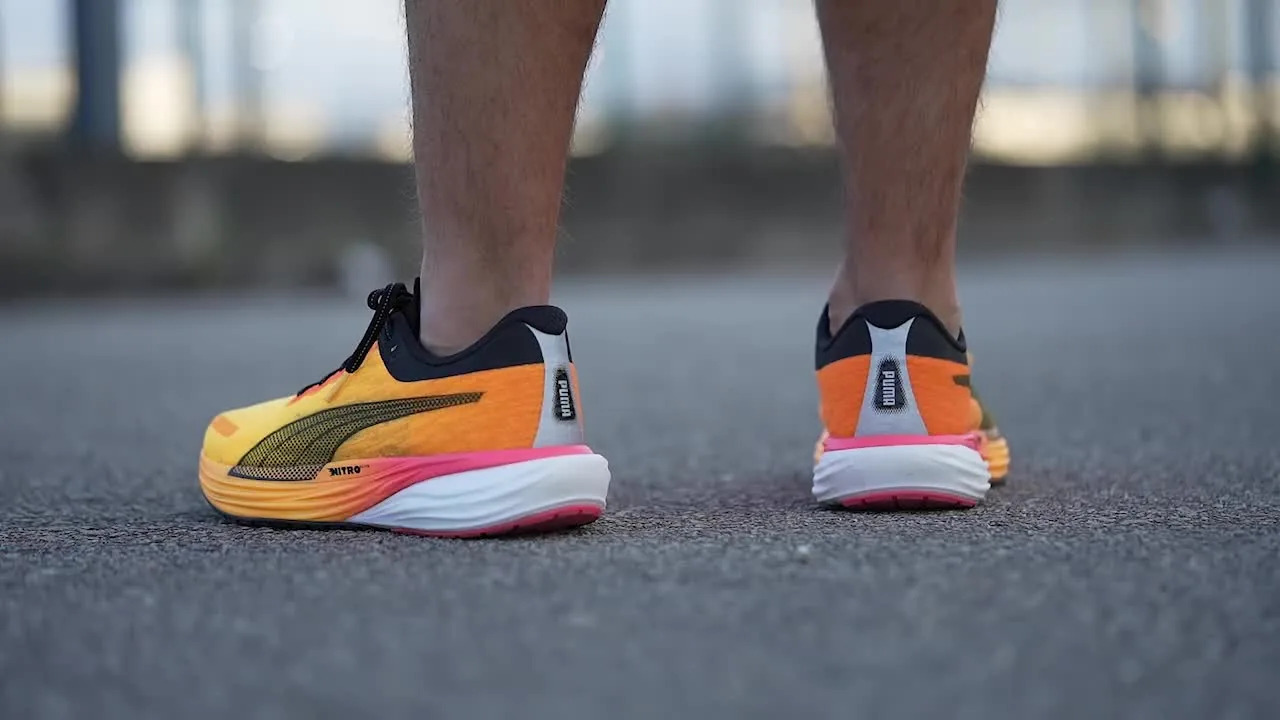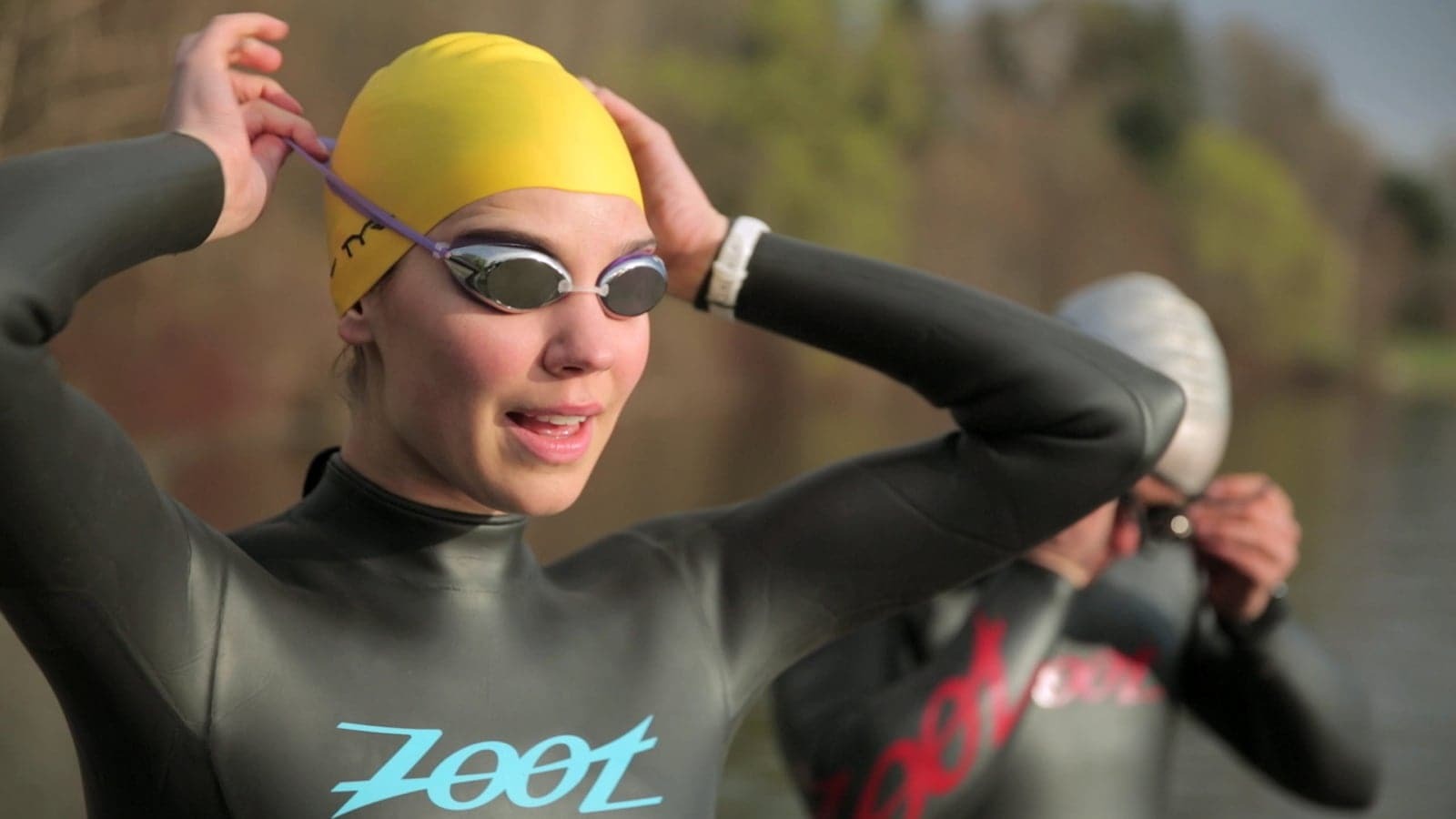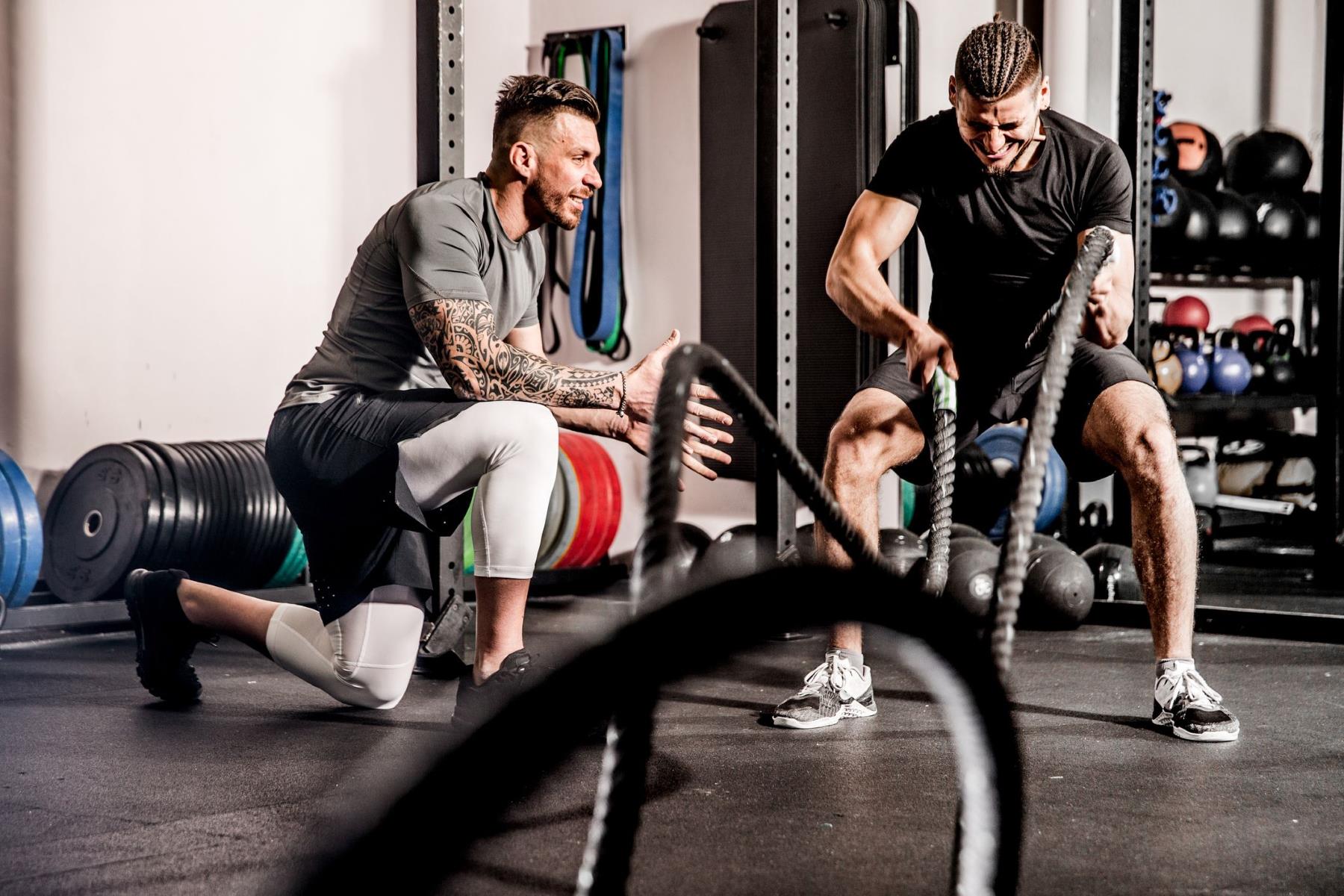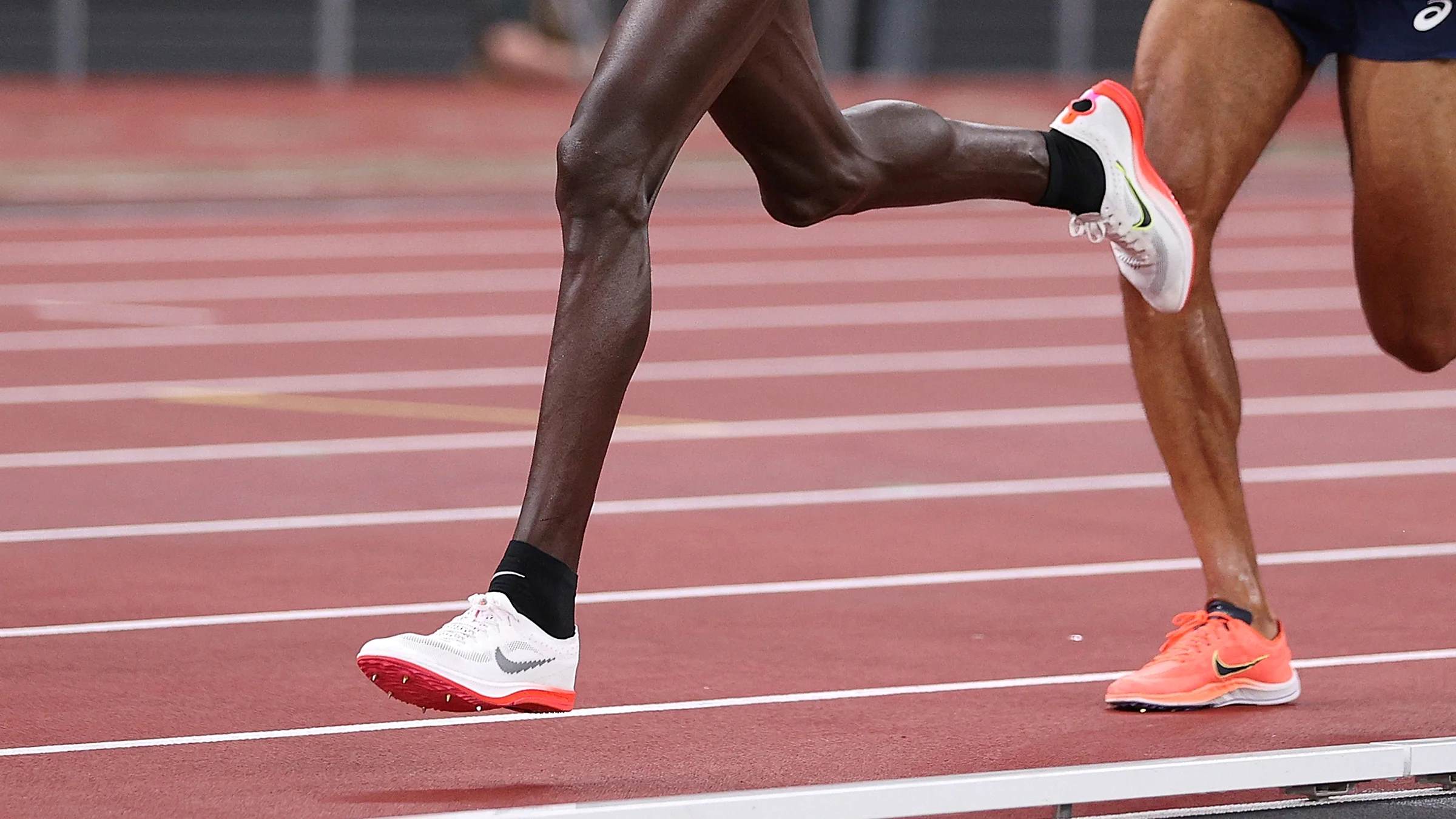

Featured
What Shoes To Wear For Track And Field
Modified: May 22, 2024
Discover the perfect shoes to boost your performance in track and field. Our featured collection offers the ideal footwear for sprinting, jumping, and throwing.
Introduction
Track and field is a sport that encompasses a wide range of athletic events, including sprinting, middle-distance running, long-distance running, jumping, and throwing. Each of these disciplines requires specific skills and techniques, and having the right footwear is essential for optimal performance and safety.
Choosing the right track and field shoes can make a significant difference in your performance on the track or in the field. The right shoes provide the necessary support, cushioning, and traction to help you maximize your speed, power, and agility.
In this article, we will guide you through the different types of track and field shoes available and help you understand which ones are best suited for your specific events. Whether you’re a sprinter, a distance runner, a high jumper, or a thrower, we’ve got you covered.
We will also discuss the important factors to consider when selecting track and field shoes and provide tips on how to ensure a proper fit. With the right shoes on your feet, you can feel confident, comfortable, and ready to take on any competition.
So, whether you’re an aspiring track and field athlete or a seasoned competitor, read on to discover the best shoes to wear for track and field and take your performance to new heights.
Choosing the Right Track and Field Shoes
When it comes to track and field, wearing the appropriate shoes for your event is crucial. The right shoes can enhance your performance, prevent injuries, and provide the necessary support for your feet and body.
One of the first considerations when choosing track and field shoes is the type of event you will be participating in. Different events require different types of shoes that are specifically designed to cater to the unique demands of each discipline.
For sprinting events, such as the 100m or 200m, it is important to choose lightweight shoes that provide excellent traction and support for explosive bursts of speed. These shoes typically have stiff soles to maximize energy transfer and feature spikes or cleats on the outsole to enhance traction on the track.
For middle-distance events, like the 800m or 1500m, a good pair of track spikes with a balance of cushioning and responsiveness is ideal. These shoes offer a blend of lightweight design and moderate support to help you maintain speed and endurance throughout the race.
Long-distance running events, such as the 5000m or 10,000m, require shoes that prioritize cushioning and comfort. Look for shoes with ample cushioning in the midsole to absorb impact and reduce the risk of fatigue or injury during longer distances.
Jumping and throwing events, such as long jump, high jump, triple jump, shot put, or discus throw, call for a different type of shoe. These events require shoes with lateral stability and grip, particularly in the forefoot area. Look for shoes with a wider base and a supportive upper to provide the stability you need during takeoff and landing.
While each event has its specific shoe design, cross training shoes can also be a viable option for multi-event athletes who participate in various disciplines. These shoes combine elements of different types of track and field shoes, offering versatility and adaptability to different events.
Consider the surface you will be competing on. Most track and field events take place on synthetic tracks, but some may take place on grass, dirt, or any other natural surface. Make sure to choose shoes with the appropriate outsole that provides the necessary traction and grip for the specific surface you’ll be competing on.
Lastly, consider your personal preferences and comfort. Try on different brands and models of track and field shoes to find the ones that fit your feet comfortably. Remember that your comfort and confidence in your shoes can have a direct impact on your performance.
By choosing the right track and field shoes for your event, you can elevate your performance, minimize the risk of injury, and give yourself the best chance of success. Keep these factors in mind as you browse through the wide array of track and field shoes available on the market.
Types of Track and Field Shoes
Track and field shoes come in various types, each designed for specific events and disciplines. Understanding the different shoe categories can help you make an informed decision when selecting the right footwear for your track and field needs.
1. Sprinting Shoes: Sprinting shoes are designed for maximum speed and acceleration. They are lightweight, have a minimal cushioning, and feature spikes or cleats on the outsole for enhanced traction on the track. These shoes have a stiff sole to increase energy transfer and promote explosive bursts of speed.
2. Middle Distance Shoes: Middle distance shoes are designed to provide a balance of cushioning and responsiveness. They offer moderate support and a lightweight design to help maintain speed and endurance over events like the 800m and 1500m. These shoes often feature spikes for traction, but not as aggressive as those found in sprinting shoes.
3. Long Distance Shoes: Long distance shoes prioritize cushioning and comfort. These shoes have ample cushioning in the midsole to absorb impact and provide protection during longer distances like the 5000m or 10,000m. They are generally more flexible and offer additional support for the arch and heel.
4. Jumping and Throwing Shoes: Jumping and throwing events, such as long jump, high jump, triple jump, shot put, or discus throw, require shoes with specific features. These shoes offer lateral stability and grip, particularly in the forefoot area to support takeoff and landing. They may have a wider base, a supportive upper, and a durable outsole for added durability and traction.
5. Cross Training Shoes for Track and Field: Cross training shoes combine elements from various types of track and field shoes, providing versatility for multi-event athletes. These shoes offer a balance of cushioning, support, and traction, making them suitable for athletes participating in different disciplines. They may not offer the same level of specialization as sport-specific shoes but can be a convenient option for athletes participating in multiple events.
Each type of track and field shoe caters to specific event requirements, ensuring that athletes can perform at their best and minimize the risk of injury. Understanding the distinctions between these different types of shoes can help you make an informed decision when selecting the right footwear for your chosen track and field discipline.
Sprinting Shoes
Sprinting shoes are designed specifically for athletes participating in sprinting events, such as the 100m, 200m, and 400m races. These shoes are built to maximize speed and acceleration, providing the necessary support and propulsion for explosive bursts of energy.
One of the key characteristics of sprinting shoes is their lightweight design. The lightweight construction allows sprinters to minimize the weight they have to carry, contributing to faster turnover and less energy expenditure. The uppers are often made of lightweight and breathable materials to enhance ventilation and comfort during intense sprinting sessions.
The midsoles of sprinting shoes tend to have minimal cushioning to provide a more direct connection between the feet and the track. This enhances the transfer of energy and allows for a more efficient sprinting stride. The stiffness of the sole also assists with springing forward during each stride, helping to generate speed.
A distinguishing feature of sprinting shoes is the presence of spikes or cleats on the outsole. These spikes are strategically placed to optimize traction and grip on the track, allowing sprinters to push off with maximum power and maintain their stride without slipping. The length and pattern of the spikes may vary, depending on personal preference and the type of track surface.
It is important to choose sprinting shoes that provide a snug and secure fit. This ensures that your foot is held in place, reducing the chances of slippage or discomfort during explosive sprints. The shoes should also have adequate support around the arch and heel to promote stability and prevent injuries.
When selecting sprinting shoes, consider factors such as your running style, foot shape, and personal preference. Trying on different brands and models can help you find the right fit that suits your individual needs.
It is worth noting that sprinting shoes are specifically designed for short-distance explosive events and may not be suitable for longer distance sprints or other track and field disciplines. If you compete in multiple events, consider cross training shoes that offer a balance of performance features across different disciplines.
With the right pair of sprinting shoes, you can optimize your speed and acceleration on the track, giving yourself the best chance to excel in sprinting events. Remember to train and practice in your sprinting shoes to familiarize yourself with their feel and maximize your performance potential.
Middle Distance Shoes
Middle distance running events, such as the 800m and 1500m races, require a balance of speed, endurance, and tactical strategy. To excel in these events, it is essential to wear the right footwear – middle distance shoes.
Middle distance shoes are specifically designed to provide runners with the necessary combination of cushioning, support, and responsiveness. These shoes emphasize lightweight construction to enhance speed, while also offering a level of comfort that lasts across the distances covered.
One of the key features of middle-distance shoes is their moderate cushioning. While not as plush as long-distance running shoes, middle distance shoes provide enough cushioning in the midsole to absorb impact and reduce the risk of fatigue during the race. This helps in delivering a more comfortable and responsive running experience.
The upper of middle distance shoes is often lightweight and breathable, featuring mesh materials that offer excellent ventilation. This allows heat and moisture to escape, keeping the feet cool and dry throughout the race. Additionally, the uppers provide a secure fit to prevent slippage and ensure stability during swift turns and bursts of speed.
Like sprinting shoes, middle distance shoes also incorporate spikes on the outsole for traction. However, the spikes in middle distance shoes are generally shorter and less aggressive compared to those found in sprinting shoes. This is because middle-distance races involve a balance of speed and endurance, requiring the runner to maintain a consistent pace over a longer distance.
When selecting middle distance shoes, it is important to consider factors such as the type of track surface and your individual running style. The shoe sole should provide adequate grip on the track to prevent slippage, while still allowing for quick and smooth transitions during the race.
The fit of middle distance shoes is crucial for optimal performance. Look for shoes that provide a snug and secure fit, without being too tight. This ensures that your foot is properly supported and reduces the risk of blisters and discomfort during the race.
Ultimately, middle distance shoes offer a balance of lightweight design, moderate cushioning, and traction to support runners in the 800m and 1500m races. By wearing the right footwear, you can maximize your speed, endurance, and efficiency, giving yourself a competitive edge in middle distance events.
Long Distance Shoes
Long distance running events, such as the 5000m and 10,000m races, require endurance, stamina, and the right footwear to support your feet over extended distances. That’s where long distance shoes come into play.
Long distance shoes are specifically designed to provide comfort, cushioning, and support to help you maintain your stride and endurance throughout the race. These shoes are built to absorb impact and reduce fatigue, allowing you to push your limits and go the distance.
One of the key features of long distance shoes is their enhanced cushioning. These shoes have a thicker midsole, typically made from responsive foam materials, that provide adequate cushioning to protect your feet from the repetitive impact of each step. This cushioning helps to reduce muscle fatigue and delay the onset of discomfort, allowing you to focus on your race.
The uppers of long distance shoes are often breathable and lightweight, allowing for sufficient airflow and keeping your feet cool and dry as you log miles. The materials used are designed to provide a secure fit while allowing for natural foot movement. Additionally, long distance shoes may feature additional support in the heel and arch areas to help with stability and prevent overpronation.
Outsole durability is an important consideration in long distance shoes, as they are expected to withstand the demands of extended miles on various surfaces. The outsole should offer good traction and durability, allowing you to confidently grip the ground without wearing out quickly.
When selecting long distance shoes, it is important to consider your individual gait, foot shape, and preferences. Some shoes may offer features specifically tailored to overpronators or neutral runners, providing the necessary support and alignment for your unique running style.
Whether you are a competitive long-distance runner or simply enjoy going on extended runs, wearing the right long distance shoes can make a significant difference in your performance and overall comfort. The cushioning, support, and durability of these shoes allow you to focus on pushing your limits and achieving your goals.
Remember to properly break in your long distance shoes before racing or embarking on long training runs. This will allow the shoes to adjust to your feet and ensure maximum comfort and performance when it matters most. With the right pair of long distance shoes, you can conquer the miles and go the distance, knowing your feet are well-supported and protected.
Jumping and Throwing Shoes
Jumping and throwing events in track and field, such as long jump, high jump, triple jump, shot put, or discus throw, require specific footwear to optimize performance and ensure safety. Jumping and throwing shoes are designed to provide the necessary support, stability, and traction to excel in these disciplines.
Jumping and throwing shoes are constructed with specific features to cater to the unique demands of the events. These shoes prioritize stability, lateral support, and grip to help athletes achieve maximum leverage and power during takeoff and landing.
One key feature of jumping and throwing shoes is their wider base. This provides a more stable platform when landing or planting during jumps or throws, reducing the risk of rolling an ankle or losing balance. The wider base also helps with balance and stability, allowing athletes to perform with confidence.
The outsoles of jumping and throwing shoes often have patterns or materials designed for superior traction. This traction is crucial during takeoff, as it ensures a secure grip on the track or field surface for a more explosive and efficient jump or throw.
Additionally, jumping and throwing shoes feature a supportive upper that provides lateral stability. This stability helps to minimize foot movement within the shoe during dynamic movements, reducing the risk of injuries and allowing for better control and execution of jumping or throwing techniques.
The material of the upper is typically durable to withstand the abrasion that may occur during landings or pivots. The shoes should fit snugly to ensure that your feet stay securely in place within the shoe, allowing for optimal performance and preventing discomfort.
When selecting jumping and throwing shoes, it is essential to consider factors such as your specific jumping or throwing technique, personal preferences, and the type of surface you will be competing on. Different shoes may have variations in grip, cushioning, or support, so finding the right shoe that complements your style can enhance your performance on the field.
It is worth noting that jumping and throwing shoes are designed specifically for these events and may not provide the necessary support or features for other track and field disciplines. If you participate in multiple events, you may want to consider cross training shoes that offer a more versatile option.
By wearing the appropriate jumping and throwing shoes, track and field athletes can optimize their power, stability, and traction, giving them the confidence to excel in high jump, long jump, triple jump, shot put, discus throw, and other jumping and throwing events.
Cross Training Shoes for Track and Field
In track and field, some athletes participate in multiple events, requiring a versatile and adaptable footwear option. This is where cross training shoes come into play. Cross training shoes are designed to provide a balance of support, cushioning, traction, and versatility, making them suitable for athletes who participate in various track and field disciplines.
Cross training shoes incorporate features from different types of track and field shoes, making them a convenient option for multi-event athletes. These shoes offer a blend of performance characteristics, allowing athletes to transition seamlessly between different activities and provide adequate support for different movements and terrains.
One of the key advantages of cross training shoes is their versatility. They are designed to support a wide range of movements, including sprinting, lateral movements, jumping, and multidirectional changes. The outsole of cross training shoes typically has a pattern or rubber compounds that provide enough traction and support on both indoor and outdoor surfaces, making them suitable for a variety of track and field events.
Cross training shoes often have a cushioned midsole that offers a balance between comfort and responsiveness. This cushioning helps to absorb impact not only during running or jumping, but also during weightlifting or other dynamic activities that may be part of a track and field training regime.
The uppers of cross training shoes are typically breathable and feature a supportive structure to provide stability during lateral movements. These shoes often have overlays and additional support features in high-impact areas to minimize foot movement and reduce the risk of injuries.
When selecting cross training shoes for track and field, it is important to consider factors such as personal preferences, the events you participate in, and the specific movements involved. Look for a shoe that offers a good balance between cushioning, support, and traction, and ensure that it fits comfortably and securely on your feet.
While cross training shoes offer versatility, they may not provide the same level of specialization as sport-specific shoes for each individual track and field event. If you are a dedicated sprinter, distance runner, jumper, or thrower, it may be more advantageous to invest in specific shoes tailored to your discipline. However, for multi-event athletes or those who participate in a variety of activities, cross training shoes can provide a convenient and efficient option.
With the right pair of cross training shoes, you can feel confident and prepared to tackle a variety of track and field events. These shoes offer the adaptability and performance features needed to excel in different disciplines, helping you reach your full potential as a versatile track and field athlete.
Factors to Consider When Choosing Track and Field Shoes
When it comes to selecting track and field shoes, there are several important factors to consider. Choosing the right shoes can significantly impact your performance, comfort, and safety on the track or field. Here are some key factors to keep in mind:
- Event Specificity: Consider the specific event or events you will be participating in. Different events have unique demands, requiring different types of shoes. Whether it’s sprinting, middle-distance running, long-distance running, jumping, or throwing, ensure that you choose shoes that are specifically designed for your event.
- Surface: Take into account the surface you will be competing on. Most track and field events take place on synthetic tracks, but some may be on grass, dirt, or other natural surfaces. Select shoes with the appropriate outsole that offers the necessary traction and grip for the specific surface you’ll be competing on.
- Fit and Comfort: A proper fit is crucial to ensure comfort and prevent discomfort or injuries. Try on different brands and models, paying attention to the shape, width, and size of the shoe. Look for shoes that securely hold your feet while still allowing some room for movement and natural foot motion.
- Cushioning and Support: Consider the level of cushioning and support required for your feet during your chosen events. Different shoes offer varying degrees of cushioning, with some prioritizing lightweight design and others focusing on maximum impact absorption. Ensure that the shoes provide adequate support for your arch and heel.
- Stability: Stability is essential to maintain proper form and minimize the risk of injuries. Look for shoes that offer stability features such as a secure upper, supportive overlays, or a wider base to improve balance and reduce foot movement.
- Weight: The weight of the shoe can impact your speed and agility. Sprinters may prefer lightweight shoes that minimize the weight they have to carry, while long-distance runners may value a balance between cushioning and weight. Consider your running style and personal preferences when it comes to shoe weight.
- Personal Pronation: Your pronation, whether you have neutral arches or overpronation, can influence the type of shoe that best suits you. Look for shoes that provide the necessary support and stability for your specific pronation type to prevent discomfort and potential injuries.
By considering these factors and giving thoughtful consideration to your specific needs, you can find the ideal track and field shoes that will enhance your performance, provide optimal comfort, and offer the necessary support and protection to succeed in your chosen events.
Tips for Proper Fit of Track and Field Shoes
Ensuring a proper fit is crucial when choosing track and field shoes. A shoe that fits well will provide better support, enhance your performance, and reduce the risk of injuries. Here are some tips for achieving the proper fit:
- Measure your feet: Start by measuring both of your feet using a reliable measuring tool. It’s not uncommon for one foot to be slightly larger than the other, so make sure to measure both and use the size of the larger foot as your guide.
- Try on shoes in the afternoon: Feet naturally swell throughout the day, so it’s best to try on shoes in the afternoon or evening when your feet are at their largest. This will ensure that you find a shoe that can accommodate any swelling or expansion during exercise.
- Wear the right socks: When trying on track and field shoes, wear the type of socks you would typically wear during your workouts or competitions. This will give you a more accurate feel for how the shoes will fit and prevent any surprises when you actually wear them during activity.
- Ensure ample toe room: You should have about a thumbnail’s width of space between your longest toe (usually the big toe) and the front of the shoe. This allows for proper toe splay and prevents discomfort or friction during movements.
- Check for proper width and snugness: The shoe should fit comfortably around the widest part of your foot without feeling too tight. You don’t want the shoe to be excessively loose or create pressure points.
- Walk or run in the shoes: Take a short walk or jog around the store or testing area to get a feel for the shoes. Pay attention to any discomfort or areas of rubbing or friction. The shoes should feel supportive and stable during movement.
- Consult with a professional: If you’re unsure about your shoe size or fit, consider visiting a specialty running store or consulting with a professional shoe fitter. They can provide valuable insight and expertise to help you find the perfect fit for your track and field needs.
Remember that everyone’s feet are unique, and what works for one person may not work for another. It’s important to trust your comfort and instincts when selecting track and field shoes. Don’t hesitate to try on multiple brands and models to find the one that fits you best. A well-fitted shoe can make a world of difference in your performance and overall enjoyment of your track and field activities.
Conclusion
Choosing the right track and field shoes is vital for achieving optimal performance, comfort, and safety in your events. Whether you are a sprinter, middle-distance runner, long-distance runner, jumper, thrower, or multi-event athlete, selecting the appropriate footwear can make a significant difference in your ability to excel in your chosen discipline.
Consider the specific requirements of your event, such as the need for speed, cushioning, stability, or grip, when selecting your shoes. Sprinting shoes are ideal for explosive bursts of speed, while middle distance shoes provide a balance of cushioning and responsiveness. Long distance shoes prioritize comfort and endurance, whereas jumping and throwing shoes prioritize stability and traction.
For athletes participating in multiple events, cross training shoes offer versatility and adaptability across various disciplines. These shoes feature a blend of performance features to support different movements and terrains.
When choosing track and field shoes, factors such as fit, comfort, surface, pronation, and personal preferences should be considered. Take the time to measure your feet, try on multiple shoes, and walk or run in them to ensure a proper fit. Don’t hesitate to consult with professionals or specialty retailers for expert guidance and advice.
Remember, finding the right track and field shoes is a personal journey. What works for one athlete may not work for another. Trust your instincts, listen to your body, and prioritize your comfort and performance needs.
With the right track and field shoes, you can optimize your speed, endurance, stability, and traction, giving yourself the best chance to succeed in your events and reach your athletic goals. So lace up, step onto the track or field, and embrace the exhilaration of competing in the sport of track and field with the right shoes on your feet.
